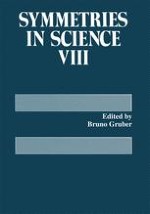1995 | OriginalPaper | Chapter
Algebraic Approach to the Hypercoulomb Problem
Authors : E. Santopinto, M. Giannini, F. Iachello
Published in: Symmetries in Science VIII
Publisher: Springer US
Included in: Professional Book Archive
Activate our intelligent search to find suitable subject content or patents.
Select sections of text to find matching patents with Artificial Intelligence. powered by
Select sections of text to find additional relevant content using AI-assisted search. powered by
The low-lying states of baryons are thought to be mainly composed of three-quarks configurations. Although for light (u,d) quarks a construction of the quark-quark interaction is very difficult, it has been suggested that a good fraction of this interaction is of three-body character [1], and that, in addition, it can be well approximated by a hypercentral potential, i.e. an interaction that is invariant under rotations in the six dimensional space spanned by the intrinsic coordinates of the three-body problem. This suggestion arose from a study of the flux tube configurations of Fig. 1 for heavy-quark baryons. However, in general, the fact that QCD is a non-abelian gauge theory leads to gluon-gluon couplings which, in turn, produce three-body forces, as shown in Fig. 2. One is thus led to the conclusion that three-body forces can be a very important part of the quark interactions and this is particularly so for baryons composed of light quarks where the coupling constant αs is large.
